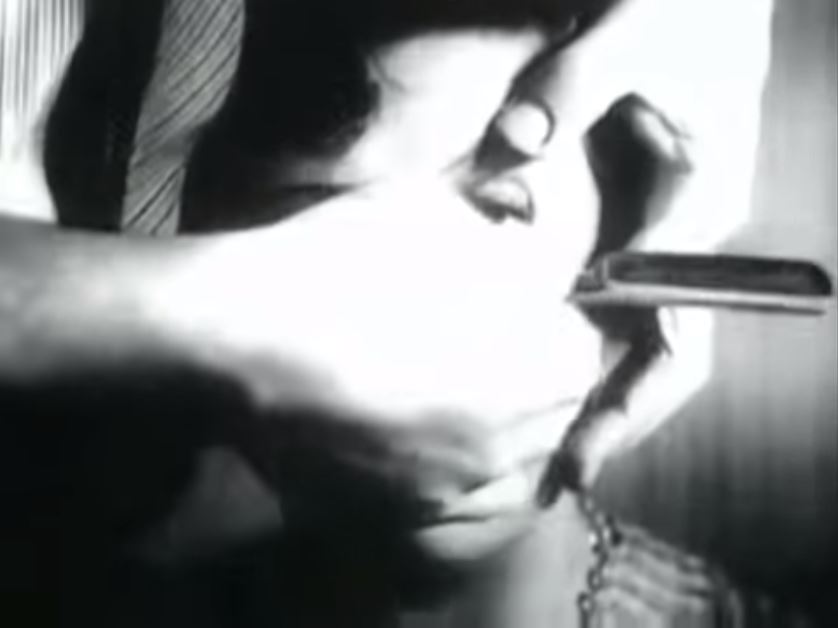10 Years 10 Films (10Y10F) is a project to display embedded YouTube selections of cinema history. This is Part Five of a series that gives the viewer a quick time-lapse view of how movie technology and style has developed throughout the world – one clip each year – from 1888 through 2017, starting with the foundations to see how filmmakers build or deconstruct them.
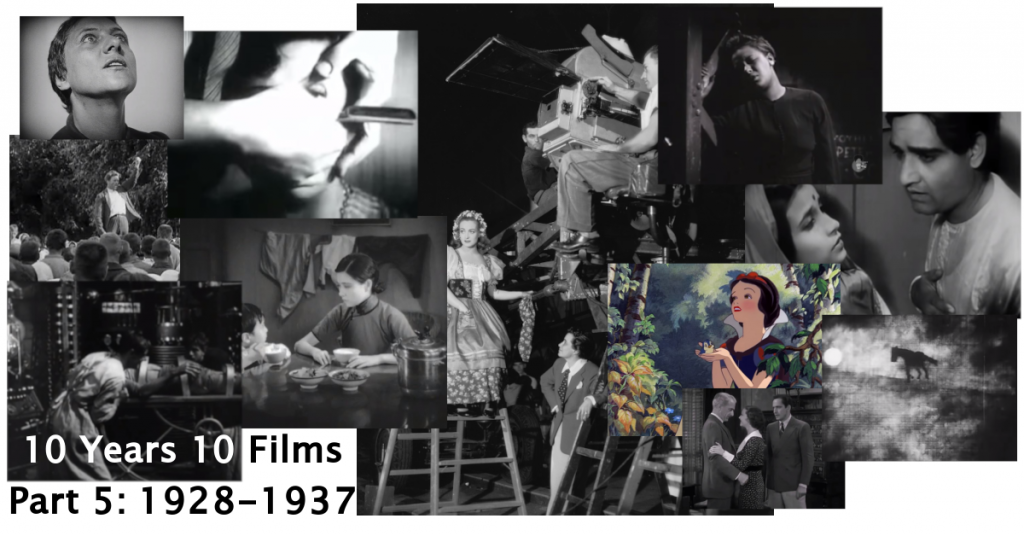
Sound “talkies” and censorship are the huge cinematic changes for this decade. It’s hard to say how the Great Depression (1929, lasting about ten years) affected the film industry, but Nazi policies throughout the 1930s definitely had an effect until the end of WWII, and many German filmmakers and actors emigrated.
Various methods of including sound were tried throughout the 1920’s, but the majority of movie theaters in America were not equipped to play them until late 1930. If you’re wanting to watch a title from 1928-1931 (even into 1938 internationally), be aware that there may be both silent and sound versions, which are obviously quite different movie experiences.
With talkies came a stronger need for censorship in Hollywood. The Production Code Administration, formed in June 1934, required all major studio films to display their “MPPDA” approved certificate, which continued even past the disbandment of the PCA in 1968. You can read more about this in my “Changes in the Hollywood Production Code” post. Here’s a clip from September 1934 of Joseph Breen, head of the PCA:
Technicolor had refined its process in the 1930s and Walt Disney had exclusive access to the product from 1932 to 1935. Disney created the Silly Symphony cartoon series, and Flowers and Trees was the first produced in color. It would still be decades before the majority of films could afford to be made in color, but Natalie Kalmus (with 404 credits on IMDb) was the driving force of the technology from 1934-1949. More about her at F Yeah History.
At this point in the 10Y10F series, it will be increasingly difficult to pick the essential films, and certain actors and directors will inevitably be left out. Fortunately, movie history (at least in the United States) is abundant from 1928 forward, and you can track Oscar winners from 1927. The year in film pages on Wikipedia are helpful, as well.
In Part Six, we’ll explore the rise of terrestrial television and the decline of the Golden Age of Hollywood.
Click on the Expand arrow for more details and additional films of note for that year. Now that we’re past the date of most films being in the public domain, I’ve linked the YouTube videos directly to the official trailer/rental whenever possible. Other disclaimers and an embedded YouTube playlist of the 10 films highlighted here are at the end of this post.*
10Y10F Series:
I 1888-1897, II 1898-1907,
III 1908-1917, IV 1918-1927,
V 1928-1937, VI 1938-1947,
VII 1948-1957…
/ Collapse All ˄
1928 – The Passion of Joan of Arc [trailer] (Dreyer; France)
Based on the actual trial transcripts of 19-year-old Joan of Arc, 1431. France so-admired Danish director Carl Th. Dreyer that they asked him to make a film about a French national hero, or heroine. Dreyer had a unique stately, slow style of making films, and this is his most well known work, followed by Vampyr (1932). Expand
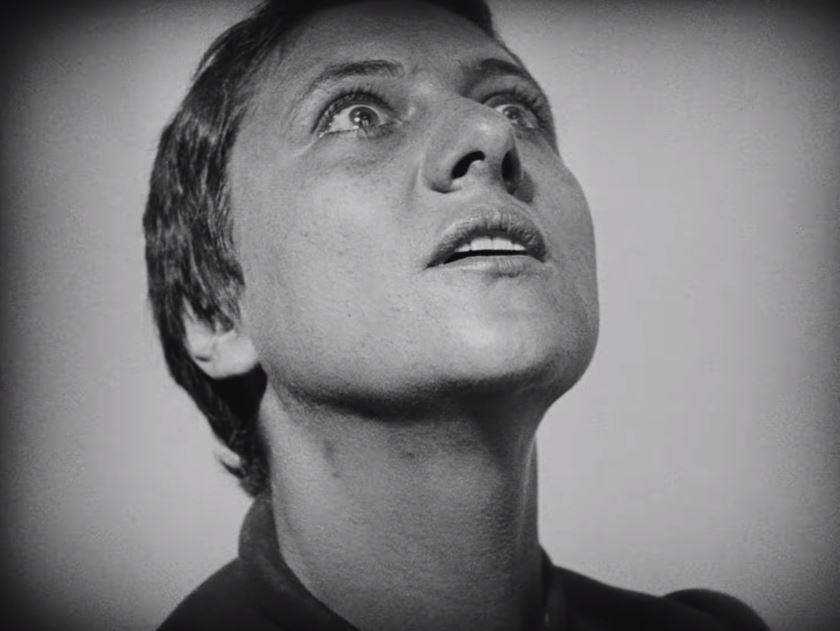 La Passion de Jeanne d’Arc (Jeanne d’Arc lidelse og død). 82-110min. depending on version and fps speed. France. Silent.
La Passion de Jeanne d’Arc (Jeanne d’Arc lidelse og død). 82-110min. depending on version and fps speed. France. Silent.
Other film(s): Street Angel (102min. Fox Movietone sound-on-film. USA.) One of several popular films pairing the expressive actress Janet Gaynor and the lushly romantic director Frank Borzage. This was nominated in the first Academy Awards for Best Actress (winner), Best Art Direction, and Best Cinematography.
Shiraz [trailer] (105min. Silent. India.) A beautiful film about the romantic relationship that inspired the construction of the Taj Mahal in the 1600s. This was one of several films made by Franz Osten (German director), Himanshu Rai (Indian producer), and Niranjan Pal (playwright and screenwriter). All were involved in creating the technologically-advanced Bombay Talkies studio in 1934, which eventually produced 40 films. I highly recommend the 2017 4K restoration of Shiraz with a new soundtrack by Anoushka Shankar. (Available through BFI and Juno, dual-format DVD/Blu-ray.)
World events in 1928: John Baird broadcasts a transatlantic television signal from London to New York. Heavy violence erupts during the “Pineapple Primary” elections in Illinois, involving Al Capone. Otto Rohwedder’s invention of sliced and packaged bread is sold for the first time. The first complete Oxford English Dictionary is published in 10 volumes. Stalin’s first five-year plan begins, collectivizing farming and industrializing the USSR. Births: American director Stanley Kubrick, actors Martin Landau, Mister (Fred) Rogers, and Shirley Temple. French actress Jeanne Moreau. French-Belgian director Agnès Varda. Italian composer Ennio Morricone.
1929 – Un chien andalou [trailer] (Buñuel/Dalí; France)
Spanish members of the Surrealist art movement, Salvador Dalí and Luis Buñuel created this dream-like short film in Paris. The 1960 trailer presented here uses the Buñuel-approved soundtrack with two tangos and a piece from Wagner. Buñuel remained a highly-respected writer and director, making films all the way up to 1977. Expand
Other film(s): The Hollywood Revue of 1929 [clip] (118min. Charles Reisner. USA.) In the first couple years of the “talkies,” every major Hollywood studio was eager to showcase their actors in a singing and dancing revue. Many of these films had segments in color, too. MGM’s The Broadway Melody was the first (more of a musical/drama), but they released their Revue later in the year with nearly all of their major stars (Jack Benny, Norma Shearer, Laurel & Hardy, Buster Keaton, Bessie Love, and many more). I’ve linked to a clip of Joan Crawford singing and dancing to “Got a Feelin’ for You”.
World events in 1929: First Academy Awards recognizes films from 1927-1928. India declares independence from the British Empire. In October, the New York Stock exchange crashes. Births: Chilean-French filmmaker Alejandro Jodorowsky, Italian director Sergio Leone, actors Audrey Hepburn, Bob Newhart, Grace Kelly, James Hong and Max von Sydow.
1930 – Earth (Dovzhenko; Soviet Ukraine)
In the peaceful countryside, Vassily opposes the rich kulaks over the coming of collective farming. While this film was publicly funded, it was so artfully composed that its message remains ambiguous. Expand
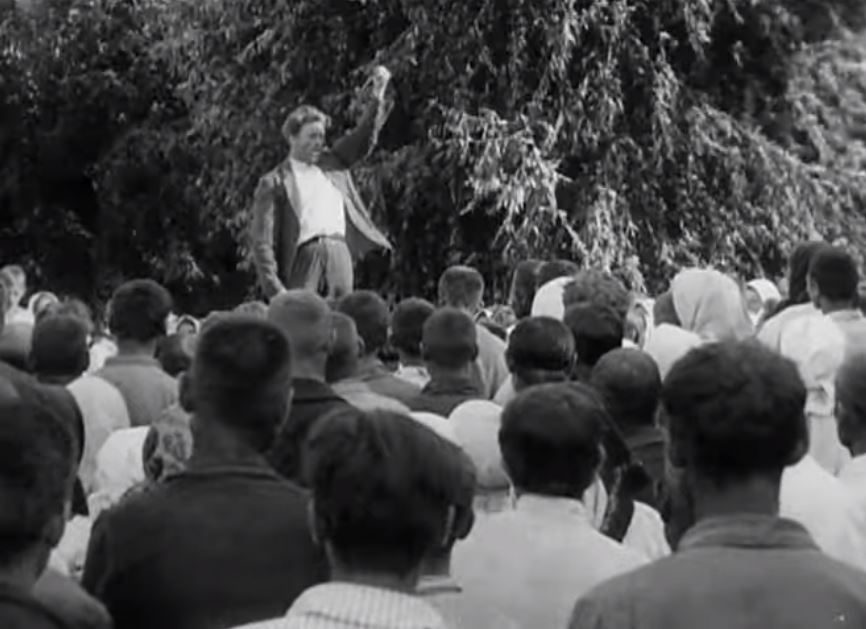 The title Zemlya in Ukranian means earth or soil. 78min. Alexander Dovzhenko. Kiev Studios. Silent. Public domain.
The title Zemlya in Ukranian means earth or soil. 78min. Alexander Dovzhenko. Kiev Studios. Silent. Public domain.
Other film(s): The Blue Angel [trailer] (108min. Josef von Sternberg. Germany. Shot in German and English. UFA/Paramount.) An elderly professor’s (Emil Jannings) ordered life spins dangerously out of control when he falls for a nightclub singer (Marlene Dietrich). This is the first film in a long partnership between von Sternberg and Dietrich, with her one-of-a-kind persona and androgynous style.
The Hell-Bound Train [clip] or Hellbound Train (50min. James and Eloyce Gist. Washington, DC? USA.) A Christian evangelical cautionary tale about the devil driving “THE MIDNIGHT SPECIAL RUNNING WITH NO HEADLIGHT. WHICH COACH DO YOU RIDE?” I wrote about this recent rediscovery, found in the Pioneers of African American Cinema collection (2016, currently on Criterion Channel and Kanopy).
World events in 1930: The 3M company markets Scotch Tape. Toll House chocolate chip cookies and Hostess Twinkies are invented. Pluto discovered. Mahatma Gandhi leads the Salt March in India. 13 teams from Europe and the Americas compete in the first FIFA World Cup. The Motion Picture Production Code (“Hays Code”) imposes strict guidelines on the treatment of sex, crime, religion and violence in American films for the next 40 years. Births: Tippi Hedren, Gene Hackman, Steve McQueen, Clint Eastwood, Sean Connery, and Jean-Luc Godard.
1931 – Frankenstein [clip] (Whale; USA)
An obsessed scientist assembles a living being from parts of exhumed corpses. “It’s alive! It’s alive!” Universal Studios was on the brink of collapse in 1930 when they released Dracula starring Bela Legosi. With that success, Universal quickly became known for its horror movies. Boris Karloff (Frankenstein’s monster) and Legosi paired up for several of these together in the 1930s and 1940s. Expand
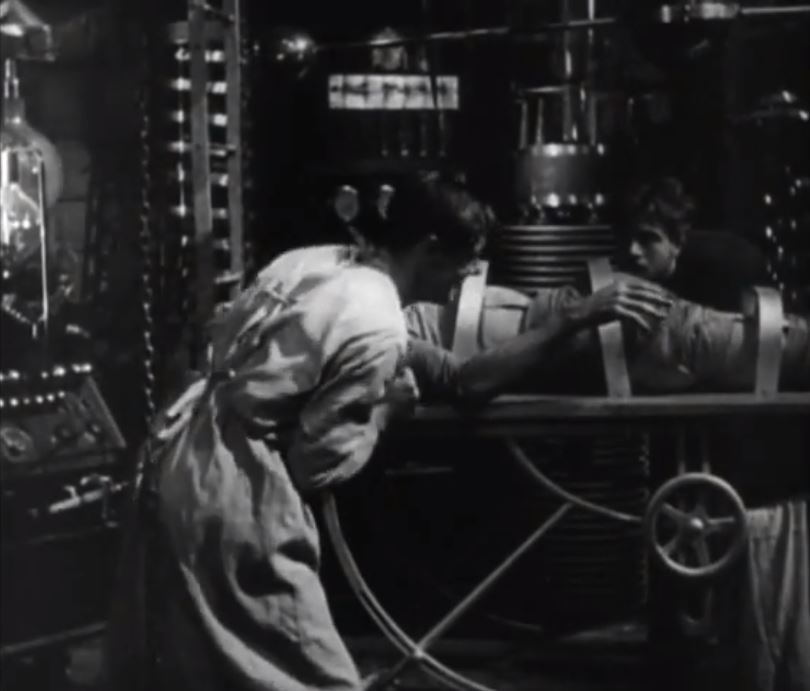 71min. Hollywood, CA. Directed by James Whale (England).
71min. Hollywood, CA. Directed by James Whale (England).
Other film(s): Mädchen in Uniform [clips] (Girls in Uniform 88min. Leontine Sagan. Germany.) At an all-girls boarding school, Manuela falls in love with a teacher, to terrific consequences. Screenwriter (and playwright of the original production) Christa Winsloe called it a critique of the Prussian educational system, but it’s historically been known as an early film with obvious lesbian themes, and one of the few films from the 1930s directed by a woman. Kino Lorber released a restored version of the film in their Pioneers of Queer Cinema (2020), with Michael (1924) and Victor & Victoria.
World events in 1931: The Commission is formed as the governing body of the American Mafia. Al Capone is sentenced to 11 years in prison for tax evasion. Porsche is founded. The Empire State Building is completed. Some consider the September invasion of Manchuria by Japan the key event leading to WWII. Mao Zedong establishes a dis-contiguous Chinese Soviet Republic. Births: Robert Duvall, James Earl Jones, James Dean, William Shatner & Leonard Nimoy (born 4 days apart), Olympia Dukakis, and Indian actress Suchitra Sen. Italian filmmaker Ettore Scola.
1932 – Merrily We Go to Hell [trailer] (Arzner; USA)
A drunken reporter is rescued from his alcoholic haze by an heiress whose love sobers him up and encourages him to write a play, but he lapses back into dipsomania. This is one of Dorothy Arzner’s most popular films. With a career spanning from 1919 to 1943, fifteen years of which were spent as a director, Arzner remains the most prolific female studio director in the history of American cinema. Expand
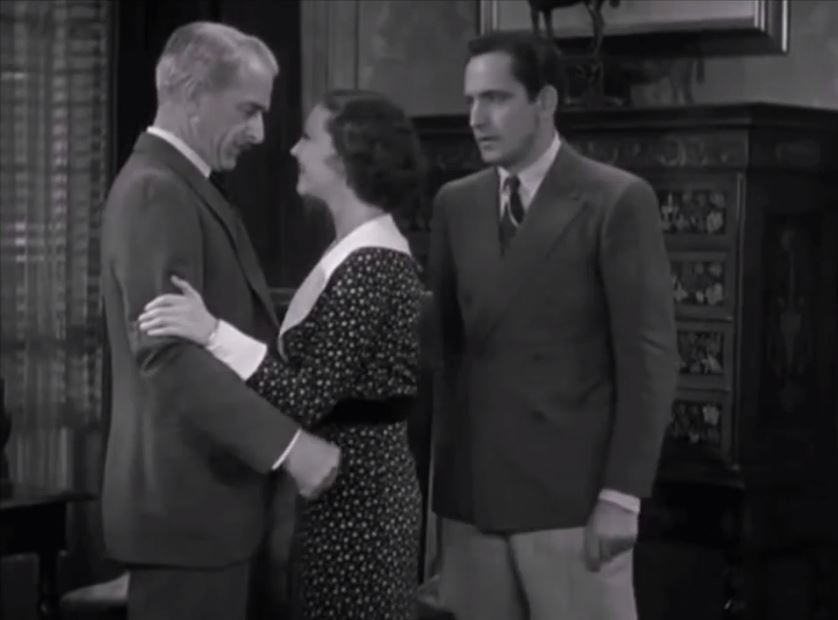 78min. Paramount Publix studio, Hollywood.
78min. Paramount Publix studio, Hollywood.
Other film(s): Grand Hotel [trailer] (112min. Edmund Goulding. Metro-Goldwyn-Mayer studio, Hollywood, USA.) Possibly the most lavish Pre-Code Hollywood film of the 1930s, despite the devastation of the Great Depression. An ensemble cast starring Greta Garbo, John and Lionel Barrymore, Joan Crawford, and more.
World events in 1932: Ed Sullivan, Fred Allen, and Jack Benny produce radio shows. Charles Lindbergh’s baby boy is kidnapped, the ransom is paid, but the boy is later found dead. U.S. unemployment rises above 24%. The cinema of West Bengal, India, is given the name Tollywood. Births: Composer John Williams, Soviet director Andrei Tarkovsky, French film director François Truffaut, Elizabeth Taylor, Debbie Reynolds, Pat Morita, Omar Sharif, Peter O’Toole .
1933 – A Night on Bald Mountain (Parker & Alexeieff; France)
Modest Mussorgsky’s symphonic composition is visualized abstractly by wild things and monsters at night. Most people will recognize this 1933 pinscreen-animated musical as the inspiration for a segment with the same name, in the 1940 Disney classic, Fantasia. See my full review on Letterboxd. Expand
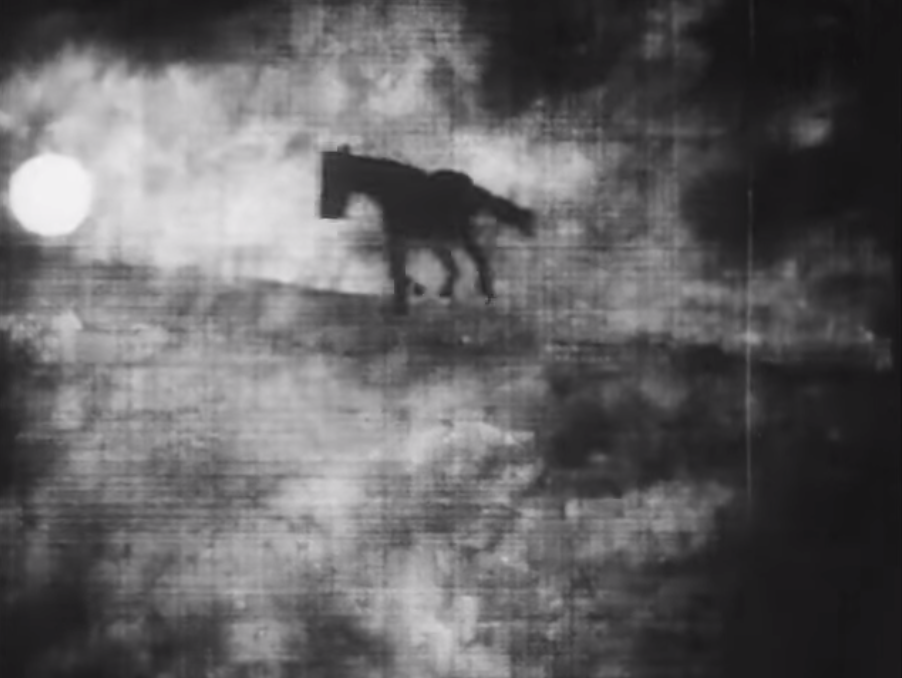 Une nuit sur le mont chauve. 8min. Directed by Claire Parker (American) and Alexandre Alexeieff (Russian). Produced in Paris, France.
Une nuit sur le mont chauve. 8min. Directed by Claire Parker (American) and Alexandre Alexeieff (Russian). Produced in Paris, France.
Other film(s): King Kong (100min. Merian C. Cooper & Ernest B. Schoedsack. RKO studio, Hollywood, USA.) The original big monster movie. A technical marvel of not only stop motion visuals, but also a ground-breaking blend of sound effects, dialogue, and music.
World events in 1933: Adolf Hitler is appointed Chancellor of Germany. Himmler opens Dachau, the first Nazi concentration camp. Einstein immigrates to the US as a refugee from Germany. The Monopoly board game is invented. FDR begins the first New Deal programs. Nearly 14 years of American Prohibition ends in December. Births: Michael Caine, Jayne Mansfield, Gene Wilder, Carol Burnett, and Italian director Liliana Cavani.
1934 – Goddess (Wu; China)
Street walker by night, devoted mother by day, a woman fights to get her young son an education amid criminal and social injustice. Writer/director Wu Yonggang masterfully portrays the plight of the “fallen woman” (played by popular actress Ruan Lingyu) with Confucian values in pre-Communist China. Expand
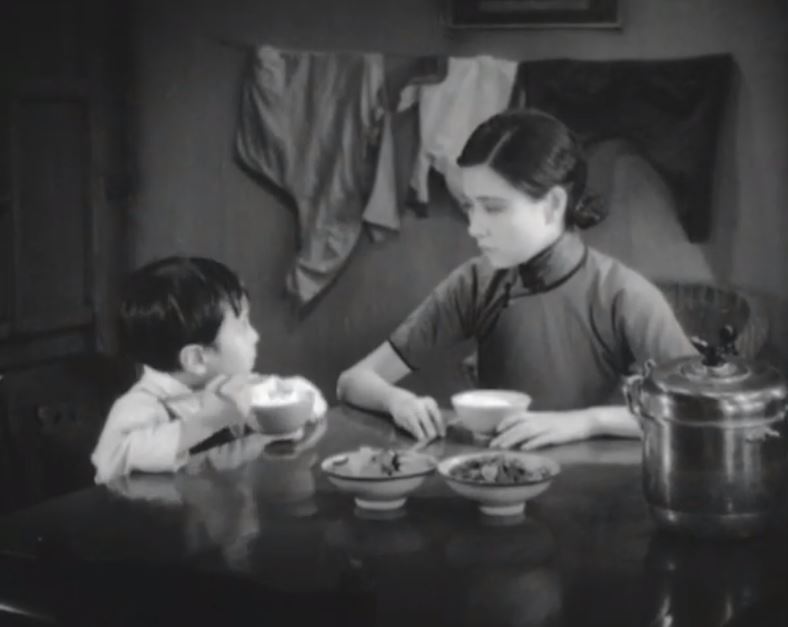 Shen nu lit. “divine woman,” a euphemism for prostitute. 78min. Shanghai, Lianhua Film studio. Silent. Public domain.
Shen nu lit. “divine woman,” a euphemism for prostitute. 78min. Shanghai, Lianhua Film studio. Silent. Public domain.
Other film(s): Belle of the Nineties [clip] (73min. Leo McCarey. Paramount studio, Hollywood, USA.) A cabaret entertainer shifts her operations to New Orleans and becomes exceedingly popular with the local men. Mae West made a fortune as one of the funniest and raciest actresses and screenwriters. In 1933, she was the second-highest paid person in the U.S., after William Randolph Hearst. This was West’s first film under the Production Code, so it’s much tamer than her earlier work – She Done Him Wrong (1933) is my personal favorite. The clip here features West singing “My Old Flame,” with the Duke Ellington orchestra.
World events in 1934: June 13 Production Code requirement. Shirley Temple, Ginger Rogers & Fred Astaire popular. Outlaws Bonnie & Clyde are killed by the police. John Dillinger is killed by the FBI. Adolf Hitler becomes Führer of Germany. The Dust Bowl of the American mid-west faces a two-day dust storm. Births: Alan Arkin, Shirley MacLaine, Kenny Baker, Sophia Loren, Brigitte Bardot, Judi Dench, and Maggie Smith.
1935 – Symphony in Black (Waller; USA)
This one-reel movie tells the story of Duke Ellington’s “A Rhapsody of Negro Life,” using pictures to convey the images running through the musician’s mind as he composed and performed the piece. Ellington’s jazz rhapsody has four parts: “The Laborers,” “A Triangle,” “A Hymn of Sorrow” and “Harlem Rhythm.” 19-year-old Billie Holiday appears as a jilted and abused lover in “A Triangle.” The film won the Best “musical short subject” Academy Award. This was towards the end of the Harlem Renaissance in America, “a flowering of Negro literature” (James Weldon Johnson) and other arts from about 1918 to the mid-1930s. Expand
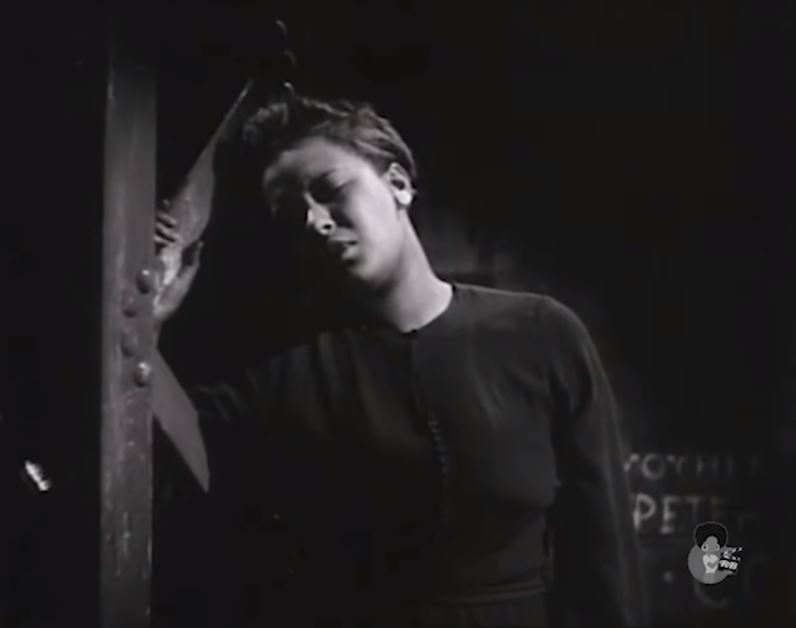 9min. Fred Waller. Paramount studio, Hollywood, USA. There were a lot of fun short jazz pieces like this in the mid-1930s – check out the hair-whipping in Cab Calloway’s Jitterbug Party.
9min. Fred Waller. Paramount studio, Hollywood, USA. There were a lot of fun short jazz pieces like this in the mid-1930s – check out the hair-whipping in Cab Calloway’s Jitterbug Party.
Other film(s): A Night at the Opera (91min. Sam Wood. MGM studio, Hollywood, USA.) A sly business manager and two wacky friends of two opera singers help them achieve success while humiliating their stuffy and snobbish enemies. The Marx Brothers were a unique comedic family active in entertainment from 1905-1949. Many find Duck Soup to be their best film, but A Night at the Opera holds up the best, even decades later, in my opinion.
Top Hat (99min. Mark Sandrich. RKO studio, Hollywood, USA.) An American dancer comes to Britain and falls for a model whom he initially annoyed, but she mistakes him for his goofy producer. Ginger Rogers & Fred Astaire are arguably the most popular singing/dancing/acting duo in history. This was one of the 10 films they made together, from 1933-1949.
World events in 1935: Alcoholics Anonymous is founded. “Paul Nipkow” in Berlin, Germany, becomes the first public television station in the world. Sir Malcolm Campbell makes the land speed record of 300 mph – 10 days later, Howard Hughes sets the air speed record of 352 mph. The Nuremburg Laws remove German citizenship from Jews. Will Rogers dies in a plane crash. Births: Elvis Presley, Donald Sutherland, Julie Andrews, Japanese animated film director Isao Takahata, Swedish actress Bibi Andersson. and Nigerian director Oumarou Ganda.
1936 – Devdas (Barua; India)
The story, adapted from a novella, pivots a tragic triangle linking Devdas, an archetypal lover in viraha (separation); Paro, his forbidden childhood love; and Chandramukhi, a reformed courtesan. This is the most popular non-historical epic in Indian history, and the film has been remade many times. Click on the Expand arrow here for more about Indian cinema. Expand
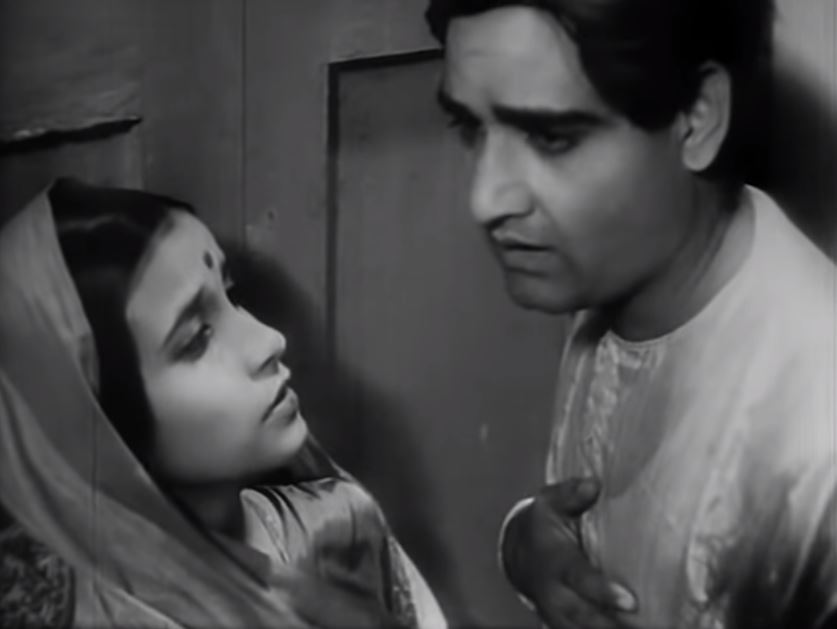 131min. Pramathesh “P.C.” Barua. Hindi. Public domain.
131min. Pramathesh “P.C.” Barua. Hindi. Public domain.
Indian Languages and Regions
I will admit to being mostly ignorant, even today, about Indian cinema. There are more than 20 different languages across the country. I added the primary regions to this Map of Indian Cinema. Note that there are actually two Tollywoods! P.C. Barua made Devdas three times: in Bengali (1935), Assamese (1937), and Hindi (1936, embedded above).
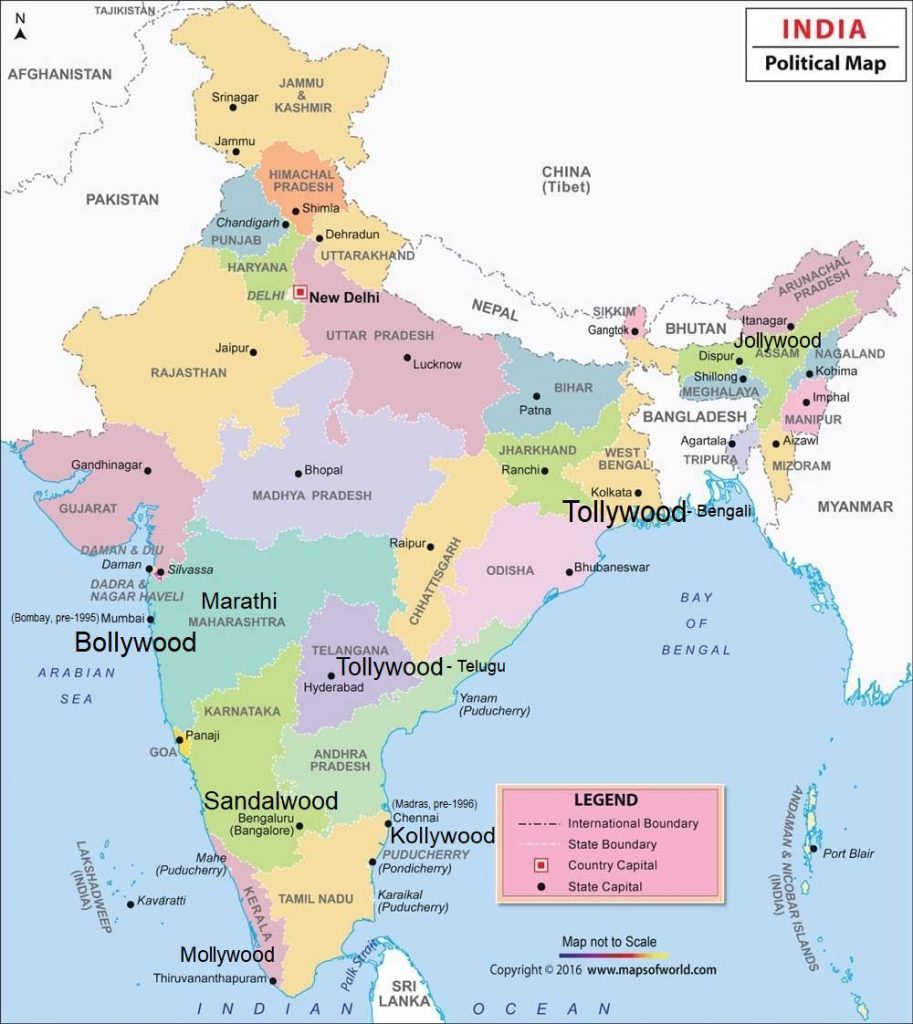 The number of films in each language has varied over the years, but Hindi (Bollywood), Kannada (Sandalwood), Telugu (Tollywood 2), Tamil (Kollywood), Malayalam (Mollywood), Bengali (Tollywood 1), and Marathi have generally remained at the top.
The number of films in each language has varied over the years, but Hindi (Bollywood), Kannada (Sandalwood), Telugu (Tollywood 2), Tamil (Kollywood), Malayalam (Mollywood), Bengali (Tollywood 1), and Marathi have generally remained at the top.
Other films from 1936
Sisters of the Gion (aka Gion no kyōdai or Gion no shamai. 69min. Kenji Mizoguchi. Japan. Public domain.) Two geisha sisters lead a hard life in the Gion district of Kyoto. After one of them feels obliged to support a bankrupt businessman, the other sister sets up various schemes to get rid of him. The film is seen as a companion piece to Mizoguchi’s Osaka Elegy which shares much of the same cast and production team.
Reefer Madness (66min. Louis J. Gasnier. Hollywood, USA.) Melodramatic events ensue when high-school students are lured by pushers to try marijuana. This is one of the earliest “exploitation films,” and possibly not distributed until 1939. George Hirliman originally advertised it as Tell Your Children of “The Burning Question,” and it had other names, as well, such as Doped Youth and Sex Slaves. Dwain Esper reportedly recut the film and it has been distributed in various forms ever since, some copyrighted and others in the public domain.
Bonus: Franklin D. Roosevelt’s “Let Me Warn You” re-election speech (source)
World events in 1936: Sergei Prokofiev’s symphonic fairy tale for children, Peter and the Wolf, makes its debut. Jesse Owens wins the 100m dash at the Berlin Olympics. The Rome–Berlin–Tokyo Axis (aka “Roberto”) begins to form as the main power against the Allies of WWII. Stress is recognized as a medical condition. Births: Alan Alda, Burt Reynolds, Dennis Hopper, Louis Gossett Jr., Bruce Dern, Robert Redford, Jim Henson, and Mary Tyler Moore. Indian actress Nutan. Pornographic actress Georgina Spelvin.
1937 – Snow White and the Seven Dwarfs [clip] (Disney; USA)
https://www.youtube.com/watch?v=gzxKctucOcg
The traditional Grimms’ fairy tale is transformed into the first full-length cel animated feature film. It was created in beautiful Technicolor and was enormously successful. Expand
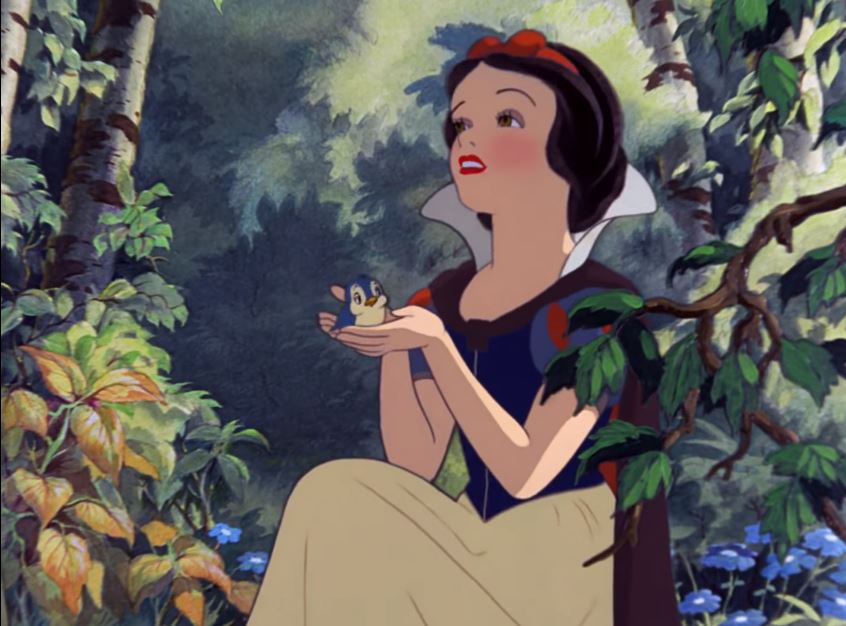 83min. Walt Disney Productions, RKO distribution. Hollywood, USA. David Hand was the supervising director, while William Cottrell, Wilfred Jackson, Larry Morey, Perce Pearce, and Ben Sharpsteen directed the film’s individual sequences. Available for purchase on YouTube.
83min. Walt Disney Productions, RKO distribution. Hollywood, USA. David Hand was the supervising director, while William Cottrell, Wilfred Jackson, Larry Morey, Perce Pearce, and Ben Sharpsteen directed the film’s individual sequences. Available for purchase on YouTube.
Other film(s): Heidi (88min. Twentieth Century-Fox studio, Hollywood, USA.) An orphan named Heidi is taken from her grandfather (Jean Hersholt) to live as a companion to Klara, a spoiled, crippled girl (Marcia Mae Jones). This was 9-year-old Shirley Temple’s third year in a row as the number one box office draw in America, making charming family-friendly movies. The director, Allan Dwan, was active in Hollywood from 1911-1961!
World events in 1937: Of Mice and Men and The Hobbit are published. Nylon is patented and Spam is introduced by Hormel. A 20th Century Fox film vault fire ignites interest in film preservation. The airship Hindenburg explodes. Picasso paints Guernica. Births: Vanessa Redgrave, Billy Dee Williams, George Carlin, Morgan Freeman, Dustin Hoffman, Ridley Scott, Jane Fonda, Anthony Hopkins, and Jack Nicholson. Turkish filmmaker Cüneyt Arkın.
* DISCLAIMERS
As of 2020, most American films made after 1924 are not in the public domain, so for the rest of the 10Y10F Series, full-versions of films will be harder to come by on YouTube.
Also note: “Silent” films were usually accompanied by live music, narration, and/or sound effects – improvised, compiled from cue sheets of common themes, or more commonly in the 1920s original score. It can be hard to tell if the sound accompanying some of the clips in this post were intended by the original director. Precise details of films are hard to come by, even in the history books, much less the repeated misinformation on the internet.
Other than a couple of classes in college involving film, I fully admit to having no professional training in cinema history. Please let me know if any corrections need to be made, or if you have any other feedback. I usually respond pretty quickly to comments on this site.
YouTube playlist: 10Y10F Part 5: 1928-1937
10Y10F Series:
I 1888-1897, II 1898-1907,
III 1908-1917, IV 1918-1927,
V 1928-1937, VI 1938-1947,
VII 1948-1957…
